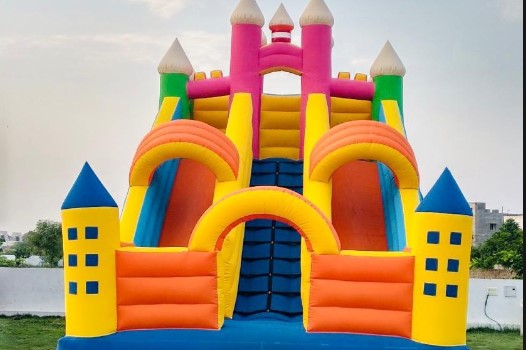
WorkSafe has released new guidelines on inflatable devices, and LGIS members are encouraged to familiarise themselves on the precautions needed while using such inflatable devices during community fairs and other similar events.
The tragic incident in December last year at a Tasmanian school where six children lost their lives when a sudden gust of wind blew away a bouncy castle with several children in it, prompted many members to revisit their use of inflatable devices.
WorkSafe's new information sheet advises on hazards and risk controls for inflatable amusement devices in accordance with work, health and safety legislation.
The sheet categorises these devices into land borne and water borne. It provides instructions on safety controls for both types.
Land-borne inflatable devices
These devices should be:
- Secured and anchored with anchor points provided according to the manufacturer's instructions and relevant technical standards. Where required, a competent person should be engaged to design appropriate anchorage systems.
- Evacuated when wind gusts exceed the manufacturer's guidelines or, in the absence of manufacturer's recommendations, when the wind gusts are over 40 km per hour. Operators should utilise an anemometer to measure wind speed where possible.
- Installed with suitable impact absorbing mats if they are in areas where patrons can fall off the unfenced platform of the inflatable e.g. entrance and exits.
- Supervised at all times by people who are competent to operate the device safely.
- Monitored so a device is not used at the same time by more than the recommended maximum number of patrons.
- Monitored so electrical or other powered components of the inflatable cannot be interfered with by patrons, in particular children.
- Inspected regularly for wear or rips in the fabric.
Water-borne inflatable devices
For inflatable pool amusement devices pool operators should:
- Provide adequate pool supervision for patrons
- Encourage parent or guardian supervision to complement other pool supervision
- Prepare and maintain emergency plans including procedures to deal with unsafe behaviour and suspected drowning
- Hold emergency drills to test and practice emergency plans and procedures. If the waterborne inflatable device is continuously blown with a platform height of 3 metres or more, plant and design registration is required.
For more details on WorkSafe information sheet on inflatable amusement devises, visit their website.
For advice and support on risk management practices please contact the LGIS risk team or your Regional risk coordinator.
